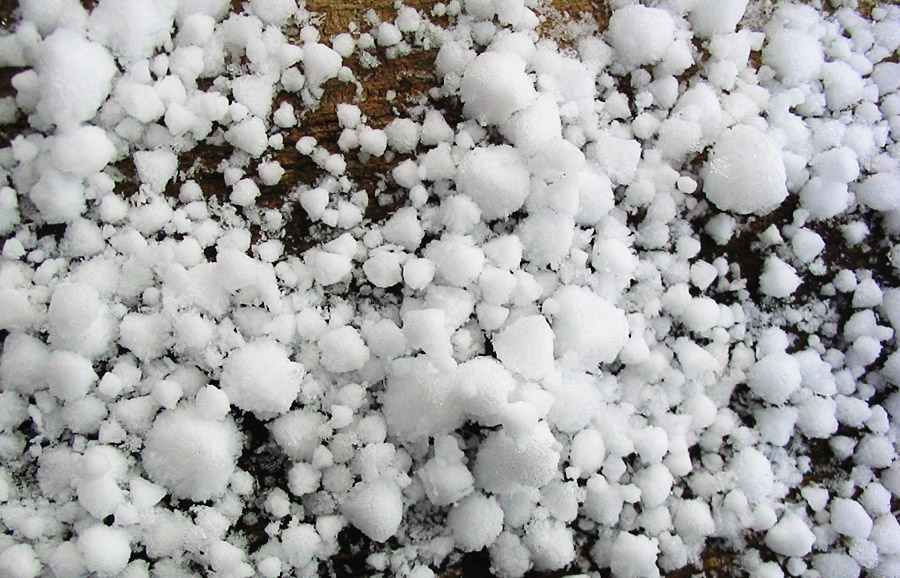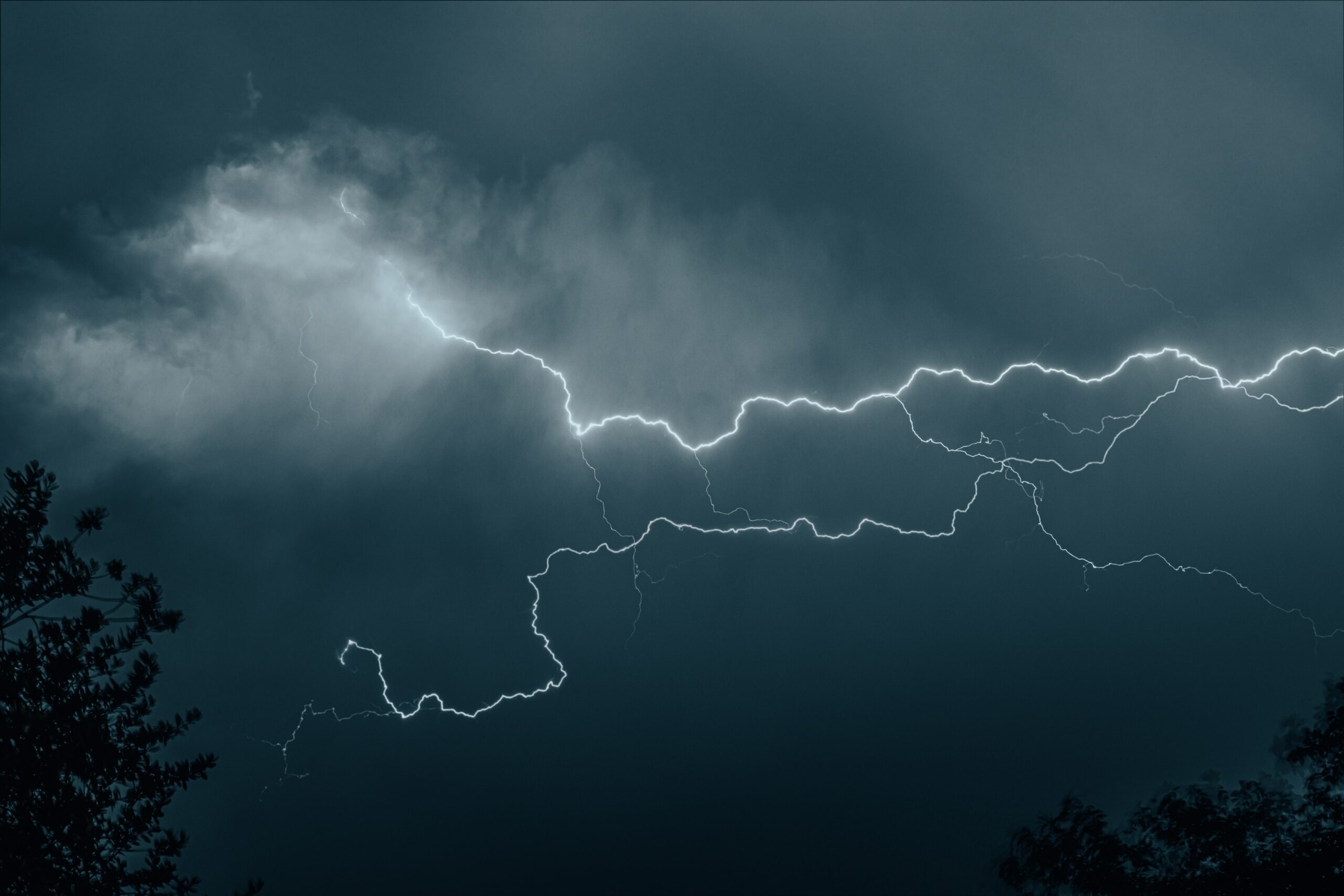It’s summer here in the Southern Part of Heaven and that means it’s time for hail storms. So I thought a column on the science of hail would be timely. Plus, my wife recently asked me a question about hail and my explanation was a bit disorganized, so I hope this one is an improvement.
Any discussion of hail should begin with a review of the temperature of the air as a function of altitude. As North Carolinians who head to the mountains in the summer know, the air gets cooler as you get higher above sea level. On a yearly average, the air temperature drops below freezing, 32 °F, around 8,000 feet, then drops to 2 °F at 16,000 feet, and to -30 °F at 25,000 feet. The temperature continues to drop to -70 °F at 50,000 feet, the top of the troposphere, at which point it begins to warm again. The reason it begins to warm above an altitude of 50,000 feet, while interesting, is not important to our discussion here, since what we commonly refer to as “weather,” including hail, occurs within the troposphere. The science behind why the air cools between 0 and 50,000 feet is also quite interesting. However, in order not to throw us off track, I have consigned the summary of that to the endnote below.
Now that we know the temperature profiles in the troposphere, we need to turn our attention the prevailing air currents in a thunderstorm. The first required feature for a thunderstorm is an upward flow of warm, moist air. This prerequisite is what generally limits thunderstorms to the summertime. As the warm air rises, it cools, causing its density to increase,e as well as resulting in condensation of some of the moisture into raindrops. Then the now cooler, denser air and rain begin to fall, creating a downdraft. As I explained in a previous column, Shelter from the Storm, the upward and downward flows of air, moisture, and raindrops generate static electricity that is released as lightning.
Now let’s turn to how and why hail can form in a thunderstorm. As the air in the updraft cools, the initial water droplets formed are quite small. Therefore, at least for a while, the velocity of the updraft is sufficient to continue to lift them. Over time the little water droplets coalesce into larger ones and the velocity of the updraft slows as it cools, such that the raindrops become too heavy to be held aloft and begin to fall. Generally speaking, the updrafts in all thunderstorms are sufficiently strong to propel at least some of the water droplets to altitudes of greater than 8,000 feet, where temperatures are below freezing. At these elevations and temperatures, the water droplets freeze and form hail. Since the particles of hail are “sticky” they can agglomerate together to form larger and larger particles. As you follow along with the logic in this paragraph, you will discover an interesting but generally unreported feature of thunderstorms. All thunderstorms make hail. Usually the hailstones melt back into rain before they reaches the surface. But if the thunderstorm has a strong enough updraft, the pellets of hail spend sufficient time at elevations higher than 8,000 feet to grow to a size too large to melt as they fall even when the air near the surface is hot. Your local weather service can “look” into the thunderstorm with Doppler radar to determine the size of the hailstones being formed and determine if they are sufficiently large to survive the decent.
While hailstones of up to 8 inches in diameter have been reported, the vast majority have diameters of less than 2 inches when they reach the ground. Nevertheless, with speeds ranging from 20 to 100 miles per hour depending on conditions, their impact can cause injury significant damage. Each year in the United States hail causes approximately one billion dollars of damage, primarily to crops, livestock, automobiles, and glass windows. People often receive minor injuries from hail, but generally are able to move to shelter before things get out of hand. Death from being struck by a hailstone is extremely rare. Hail can cause some damage to aircraft, but it is generally not sufficient to cause a plane crash. Further, modern radar allows pilots to avoid flying through strong storms.
So those are the basics of hail. I hope this column inspires you to consider the science next time you hear the patter of hail on a tin roof and to scurry under it as well.
Jeff Danner spoke with Aaron Keck on WCHL Monday – not just about hail, but also about the science of sagging power lines.
Have a comment or question? Use the interface below or send me an email to commonscience@chapelboro.com. Think that this column includes important points that others should consider? Share this column on Facebook or Twitter. Want more Common Science? Follow me on Twitter on @Commonscience.
Endnote: There are two primary reasons that the air is cooler at higher altitudes. The first has to do with the interaction of the radiation from the sun and the earth and its atmosphere. The energy from the sun arrives primarily within the visible and ultraviolet energy ranges and passes through the atmosphere without being absorbed. When the sun’s rays strike dark objects on the ground, some of the energy is absorbed, warming the surface, and some of the energy is reflected back upwards as infrared radiation. Infrared radiation is readily absorbed by water vapor, carbon dioxide, and other greenhouse gases in the atmosphere. The combined effect of these various interactions is that the sun warms the atmosphere from the bottom up.
The second reason that it is cooler at the mountaintop is known as adiabatic cooling. You are likely familiar with adiabatic cooling even if you don’t know the term. When you lower the pressure of a gas by allowing it to expand its temperature falls. You can observe this anytime you dispense Reddi-Wip® from a can, inflate a bicycle tire with a CO2 cartridge, or allow propane to flow from a tank to your grill. The nozzle through which the gas is expanding will get cold and often accumulate condensation. The same thing happens to air as it moves from the high-pressure zone near the surface of the earth to the low-pressure zone at the top of a mountain, it expands and, thus, cools.






Comments on Chapelboro are moderated according to our Community Guidelines